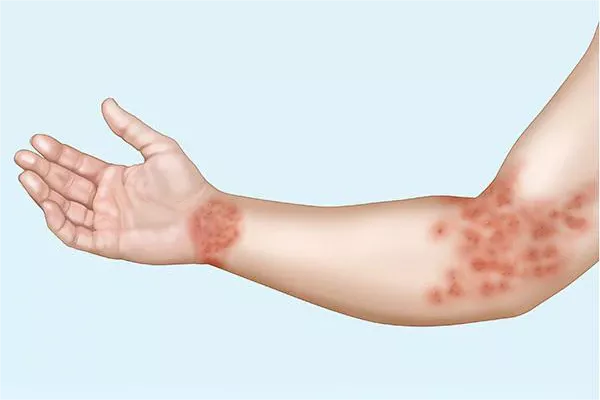Psoriatic arthritis (PsA) is a chronic autoimmune condition characterized by inflammation of the joints and the skin, affecting millions of people worldwide. It is a complex disease that can manifest in various ways, impacting different joints throughout the body. Understanding the specific joints affected by PsA is crucial for diagnosis, treatment, and management of the condition. In this article, we will delve into the intricate relationship between PsA and joint health, exploring the joints commonly affected and the implications for patients.
The Multifaceted Nature of Psoriatic Arthritis
Psoriatic arthritis is a multifaceted disease that can present with a wide range of symptoms and severity levels. It is often associated with psoriasis, a chronic skin condition characterized by red, scaly patches. However, not all individuals with psoriasis develop PsA, and the onset of arthritis symptoms may precede, follow, or occur concurrently with skin manifestations.
One of the hallmarks of PsA is its variability in presentation, which can make diagnosis challenging. The disease can affect different parts of the body, including peripheral joints, axial skeleton, entheses (the sites where tendons or ligaments attach to the bone), and even organs such as the eyes. The pattern and severity of joint involvement can vary widely among patients, ranging from mild, oligoarticular disease affecting a few joints to severe, polyarticular disease involving multiple joints.
Commonly Affected Joints in Psoriatic Arthritis
Psoriatic arthritis can affect virtually any joint in the body, but some are more commonly involved than others. The specific joints affected can provide valuable clues for diagnosing and managing the condition. Here are some of the joints commonly affected by PsA:
1. Peripheral Joints: The peripheral joints, including those of the hands, feet, wrists, elbows, shoulders, knees, and ankles, are frequently involved in PsA. Inflammation in these joints can lead to pain, swelling, stiffness, and decreased range of motion, significantly impacting mobility and quality of life. The distal interphalangeal (DIP) joints, which are the joints closest to the fingertips and toes, are often affected in a characteristic pattern known as “sausage digits.”
2. Axial Skeleton: Psoriatic arthritis can also affect the axial skeleton, including the spine, sacroiliac joints (the joints that connect the sacrum to the pelvis), and the pelvis itself. In some cases, PsA can lead to spondylitis, inflammation of the vertebrae, causing stiffness and discomfort in the back and neck. Sacroiliitis, inflammation of the sacroiliac joints, is a common manifestation of PsA and can result in lower back pain and stiffness.
3. Entheses: Enthesitis, inflammation of the entheses, is a characteristic feature of PsA and distinguishes it from other types of arthritis. Entheses are sites where tendons or ligaments attach to the bone, and inflammation at these sites can lead to pain, swelling, and tenderness. Common sites of enthesitis in PsA include the Achilles tendon insertion at the heel (Achilles enthesitis), the plantar fascia at the bottom of the foot (plantar fasciitis), and the patellar tendon at the knee (patellar enthesitis).
4. Dactylitis: Dactylitis, also known as “sausage digit,” is a distinctive manifestation of PsA characterized by inflammation and swelling of an entire finger or toe. This sausage-like swelling results from inflammation of the joints, tendons, and surrounding tissues and is often associated with significant pain and functional impairment.
The Impact of Joint Involvement on Patients’ Lives
The joint involvement in PsA can have a profound impact on patients’ physical and emotional well-being, affecting various aspects of their lives. Chronic pain, stiffness, and fatigue can limit mobility, impairing the ability to perform daily activities and participate in work, hobbies, and social interactions. Moreover, the visible manifestations of PsA, such as swollen joints, skin lesions, and deformities, can lead to self-consciousness, embarrassment, and decreased self-esteem, contributing to psychological distress and social isolation.
Furthermore, the inflammatory nature of PsA predisposes patients to complications such as joint damage, deformity, and disability if left untreated. The progressive destruction of the joints can result in irreversible structural damage, functional impairment, and decreased quality of life. Early diagnosis and aggressive treatment are essential for preventing or minimizing joint damage and preserving joint function in patients with PsA.
Diagnostic Considerations and Treatment Strategies
Diagnosing PsA requires a thorough medical history, physical examination, and appropriate diagnostic tests to assess joint involvement, skin manifestations, and other potential complications. Imaging studies such as X-rays, magnetic resonance imaging (MRI), and ultrasound may be used to evaluate joint damage, inflammation, and enthesitis.
Once diagnosed, the management of PsA typically involves a multidisciplinary approach aimed at controlling symptoms, slowing disease progression, and improving patients’ quality of life. Treatment strategies may include:
1. Nonsteroidal Anti-Inflammatory Drugs (NSAIDs): NSAIDs such as ibuprofen and naproxen may help alleviate pain and inflammation in mild to moderate cases of PsA.
2. Disease-Modifying Antirheumatic Drugs (DMARDs): DMARDs such as methotrexate, sulfasalazine, and leflunomide are commonly used to suppress inflammation, slow joint damage, and improve symptoms in PsA.
3. Biologic Therapies: Biologic agents, including tumor necrosis factor (TNF) inhibitors, interleukin-17 (IL-17) inhibitors, and interleukin-23 (IL-23) inhibitors, target specific components of the immune system involved in the pathogenesis of PsA and have revolutionized the treatment of the disease.
4. Physical Therapy: Physical therapy and exercise programs can help improve joint flexibility, strength, and function, reduce pain and stiffness, and enhance overall mobility and well-being.
5. Lifestyle Modifications: Lifestyle modifications such as maintaining a healthy weight, adopting an anti-inflammatory diet, avoiding smoking, and managing stress can complement medical therapy and contribute to better disease control and overall health outcomes.
In some cases, surgical interventions such as joint replacement surgery may be necessary to address severe joint damage and deformity in patients with advanced PsA.
Conclusion
Psoriatic arthritis is a complex autoimmune condition characterized by inflammation of the joints and skin, affecting millions of people worldwide. The disease can impact various joints throughout the body, including peripheral joints, axial skeleton, and entheses, leading to pain, swelling, stiffness, and functional impairment. Understanding the specific joints affected by PsA is essential for accurate diagnosis, appropriate treatment, and optimal management of the condition. A multidisciplinary approach involving rheumatologists, dermatologists, physical therapists, and other healthcare professionals is crucial for addressing the diverse needs of patients with PsA and improving their quality of life. Early diagnosis, aggressive treatment, and ongoing monitoring are key to minimizing joint damage, preserving joint function, and enhancing long-term outcomes in patients with PsA.
Related Topics:
The Best Ayurvedic Remedy for Psoriasis


























